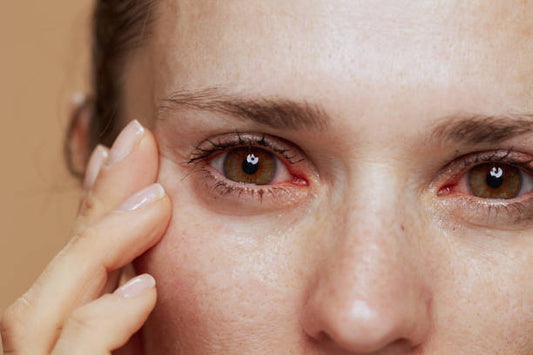Dry eye is a common eye condition that affects millions of people worldwide. Also known as "keratoconjunctivitis sicca," dry eye occurs when the eyes do not produce enough tears or when the quality of tears is compromised. This condition can be uncomfortable and even debilitating, impacting daily life and overall eye health. In this post, we will explore the symptoms, causes, and management strategies for dry eye.
Symptoms:
-
Dryness: One of the most common symptoms is a persistent sensation of dryness in the eyes. This can be described as a gritty or sandy feeling.
-
Redness: Dry eye can cause the eyes to become red and bloodshot, primarily due to irritation and inflammation.
-
Tearing: Paradoxically, some people with dry eye may experience excessive tearing, which is the body's response to the irritation.
-
Burning or Stinging: The eyes may feel as if they are burning or stinging, particularly in certain environmental conditions like windy or smoky areas.
-
Blurry Vision: Dry eye can lead to intermittent or chronic blurry vision, making it difficult to focus on tasks like reading or using digital screens.
Causes:
-
Age: Aging is a common risk factor for dry eye. Tear production tends to decrease with age, especially in postmenopausal women.
-
Environmental Factors: Exposure to smoke, dry air, wind, and air conditioning can contribute to dry eye. Prolonged screen time can also reduce blink rate, leading to dryness.
-
Medical Conditions: Conditions like Sjögren's syndrome, rheumatoid arthritis, and diabetes can increase the risk of dry eye.
-
Medications: Certain medications, such as antihistamines, decongestants, and birth control pills, can reduce tear production.
-
Eyelid Problems: Meibomian gland dysfunction, a condition where the oil glands in the eyelids don't function properly, can lead to tear instability and dry eye.
Management:
-
Artificial Tears: Over-the-counter artificial tear drops can provide temporary relief. There are various formulations available, so it's essential to choose the one that matches your symptoms.
-
Lifestyle Adjustments: Simple changes like using a humidifier, taking breaks during screen time, and protecting your eyes from harsh environmental conditions can make a significant difference.
-
Prescription Medications: In more severe cases, your eye doctor may prescribe prescription eye drops to reduce inflammation and stimulate tear production.
-
Warm Compresses: Applying warm compresses to the eyes can help open clogged meibomian glands, improving tear quality.
-
Punctal Plugs: In cases where tears drain too quickly from the eye, small plugs can be inserted into the tear ducts to keep tears on the surface of the eye longer.
-
Lid Hygiene: Regular eyelid cleaning can help prevent blockages in the meibomian glands and promote healthier tears.
Dry eye is a common and often uncomfortable condition that can impact your quality of life. If you experience dry eye symptoms, it's essential to seek guidance from an eye care professional to determine the underlying cause and develop a personalized management plan. By understanding the symptoms, causes, and management strategies for dry eye, you can take steps to alleviate discomfort and protect your eye health.


